Valom's 1/72 scale
Vickers Wellesley Mk.I
by Roland Sachsenhofer

The Vickers Wellesley is astonishing at first sight - and still has remarkable things in store for the second, third and even fourth glance. I personally always find this feature interesting. So when I came across the offer from the manufacturer Valom, it was a quick decision to finally build a Wellesley.
That the Wellesley is slightly off the mainstream is shown, for example, by the surprisingly elongated wings with a high aspect ratio of 8.83. The associated most remarkable wingspan of 22.6 metres is made clear by the relation to the fuselage length, which at 11.96 metres is only about half. This unusual proportion should ensure stable flight characteristics, but above all a long range.
Its striking appearance is further determined by the shape of the installation of the Bristol Pegasus XX radial engine. Covered only by a narrow Townend ring, it seems to balance on the fuselage nose, which tapers to a blunt cone. The resulting strangely disproportionate appearance can also be seen on other contemporary aircraft and seems to have been "state of the art" at the time.
What makes the Wellesely truly unique, however, is the way the fuselage and wings are constructed. Traditionally, the covering is mounted over a stable support structure of frames, spars, stringers or ribs. With the Wellesley, however, the construction team took a fundamentally different approach.
Based on the geodesic structure developed by Barnes Neville Wallis, which had been used successfully in British airship construction, the Wellesley's fuselage and supporting structure were constructed from a geodesic latticework, which resulted in an efficient and weight-saving, but above all an incredibly strong and robust structure.
Vickers had already used this construction method for an earlier prototype of a biplane bomber, the Vickers Type 253. However, the unconventional design layout was to become really famous with the Wellesley's successor: the Vickers Wellington proved in wartime with what incredible damage an aircraft with a geodesic skeleton could return home. The Vickers Warwick and Windsor models added two more chapters to this successful operational history.
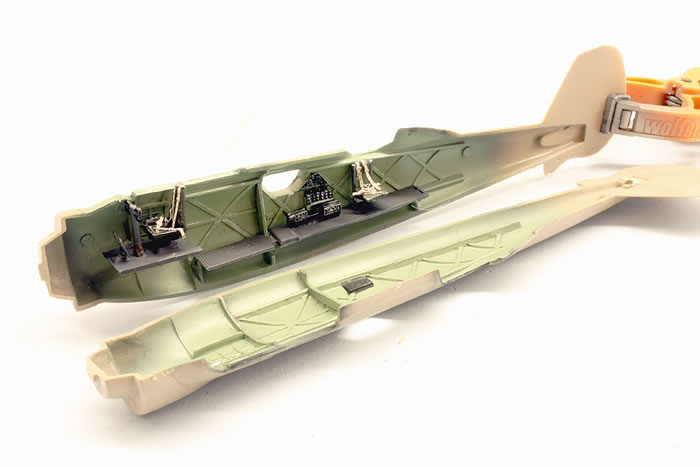
Incidentally, the naming of the two aircraft is quite interesting: it was done in honour of the famous Napoleon vanquisher and British politician Arthur Wellesley, First Duke of Wellington.
The Wellesley's peculiar construction method introduced yet another idiosyncrasy. The bomb load, since the design only worked when the fuselage was closed throughout, was carried in two "suitcases" suspended from struts under the wings. These closed "panniers", equipped with bomb bay doors, gave the Wellesley a highly eccentric appearance.
The type was built from 1935 onwards in a total of 176 examples and was used in the pre-war RAF as a light bomber. By the outbreak of war in 1939, however, the Wellesley was considered obsolete and was only to be used for live missions against the Italians in the secondary theatre of war in East Africa. There, the Wellesley cut a fine figure, not least because of its robustness.
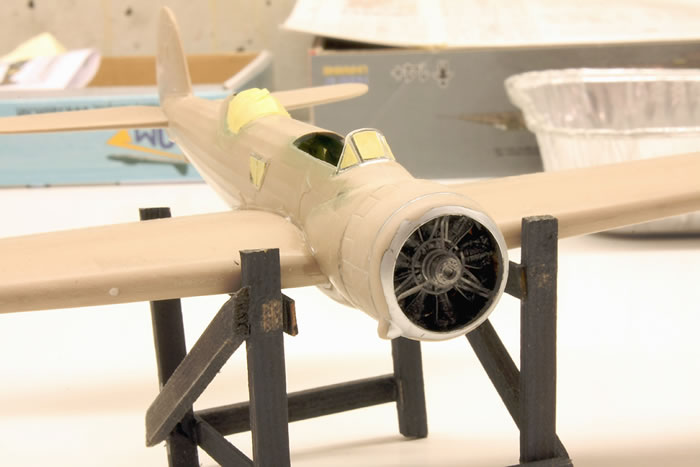
The fact that my model lacks both the "panniers" mentioned above and the unfavourable mounting of the radial engine described above is due to a special episode in the history of the Wellesley.
About the Wellesley LRDU Variant
The Royal Air Force's Long Range Development Unit (LRDU) made a long range record flight in 1938 with a number of modified Vickers Wellesleys Mk.I, covering 11,526 non-stop kilometres from Ismailia in Egypt to Darwin in Australia. Three Wellesleys piloted by Squadron Leader Richard Kellett demonstrated the enormous range potential of this type in November this year with a successful world record flight spanning two days.
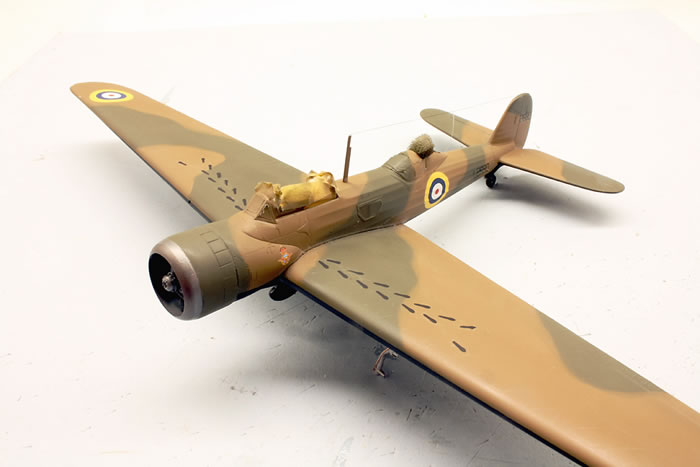
The aircraft had been modified for this venture: in addition to the removal of armament and the installation of additional tanks, the engine was also replaced with a Bristol Pegasus XXII powerplant. The new engine was aerodynamically adapted to the fuselage contour with a new fairing. Furthermore, the shape of the antenna mast on the back of the fuselage was changed and an aerodynamically covered direction finding antenna was mounted on the underside of the fuselage.
A story told by a crew member of the Wellesley, piloted by Flight Lt. Andrew Combe, illustrates that flying at that time was still done in a very casual and improvisational manner. After a landing gear leg could not be retracted after take-off for the record flight, part of the fuselage covering was cut away during the flight and a fishing net mounted on a pole was hooked into the stubborn landing gear linkage. This enabled the landing gear leg to be pulled up and latched into the landing gear bay. The record flight could thus be successfully continued. Truly courageous times, one can only say!
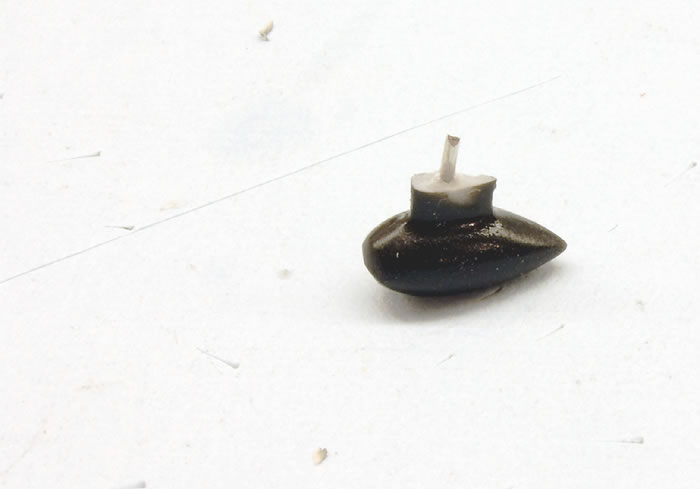
By the way, I have taken this story from a very informative and recommendable page about this record flight, which can be found for the curious under the following link: https://www.historynet.com/flight-of-the-wellesleys.htm
Here you can also find out how a fishing net mounted on a metre-long pole got into the Wellesley...
Construction and Painting |
My model shows exactly that machine with the reluctant landing gear hydraulics. Vickers Wellesley Mk.I LRDU L2680 took part in the successful world record flight on 5-7 November 1938 under the command of Flight Lt. Andrew Combe.

The kit comes from Valom and is in principle it is quite recommendable. Unfortunately I have to say that some kit parts for the LRDU version are not available and have to be rebuilt. This refers especially to the drop-shaped bearing frame fairing and the modified shape of the antenna mast. The building instructions also had weak points this time in the form of missing building steps and generally inaccurate descriptions.
All in all, however, this kit is a nice and welcome occasion to pay homage to such a rare and yet so fascinating aircraft as the Vickers Wellesley in the form of a model!
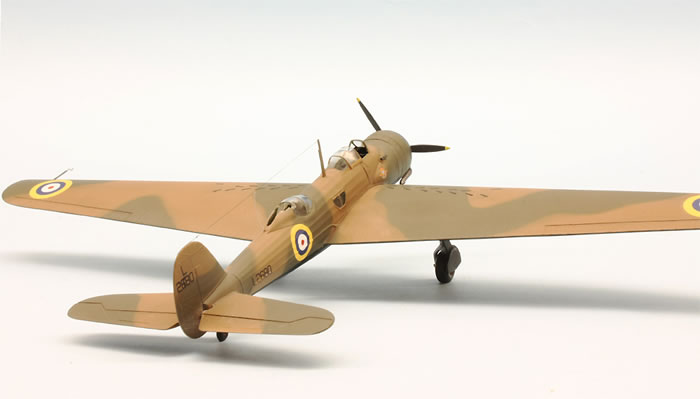
If you are interested in the building process, please have a look here on Scalemates:
https://www.scalemates.com/profiles/mate.php?id=10148&p=albums&album=65341
As ever, remarks will be appreciated: ro.sachsenhofer@gmx.at
Model, Images and Text Copyright ©
2021 by Roland Sachsenhofer
Page Created 5 March, 2021
Last Updated
5 March, 2021
Back to HyperScale Main Page

|
Home
| What's New | Features | Gallery | Reviews | Reference | Resource Guides | Forum |